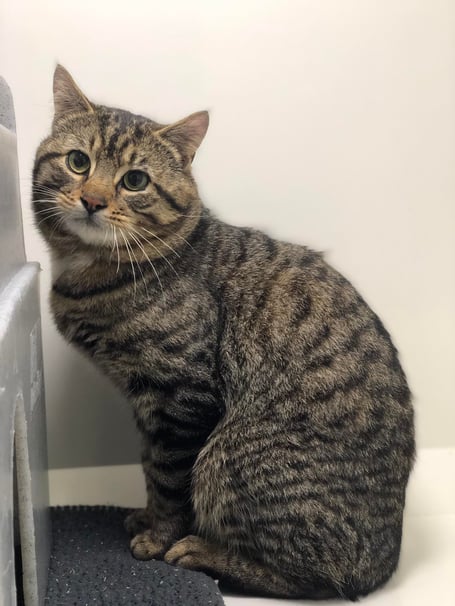Last week’s article on the Manx cat focused on this iconic breed’s history, and this week’s article examines the cat as it is today and, in particular, the health implications associated with not having a tail.
At the risk of upsetting Manx cat fans, strictly speaking the Manx cat is not a true breed in the biological sense because its tail-lessness is caused by a genetic mutation.
Scientifically speaking, a true breed has certain biological traits that produce only offspring with those traits when bred with another true breed.
Female Manx cats can produce kittens which have no tail, a short tail or a long tail – even within the same litter.
The genetic mutation that causes tail-lessness is actually a deformity affecting the whole spinal column, causing vertebrae to be missing or fused.
A Manx cat’s vertebrae tend to be missing or very short at the front end of the spine, while those at the rear may be fused causing a loss of suppleness.
Sometimes the combination of genes produces a severe genetic mutation of the spine which gives rise to a form of spina bifida.
Spina bifida is not a specific disease, and is a general term used to describe an incomplete spinal cord that does not fully cover and protect the nerves contained within it.
Nerve damage can affect messages sent from the cat’s brain, and in Manx cats this is most noticeable in relation to leg movement.
Some Manx cats appear to be unable to move their back legs independently, giving them a hopping gait not unlike that of a rabbit.
Where the genetic mutation extends to the pelvis, the Manx cat can have trouble controlling its bladder and bowls; and certain combinations can actually kill the cat (leading to the Manx cat gene sometimes being referred to as a ‘lethal gene’).
Kitten embryos carrying the lethal combination of genes are often reabsorbed during pregnancy, or can cause the kitten to be still-born.
About a quarter of Manx kittens are affected in this way resulting in litters from Manx cats being about 25% smaller than litters from most other breeds.
Another genetic mutation prevalent in the Manx breed is polydactyly, where the cat has more toes than is standard - i.e. more than five on the front paws, and four on the back ones.
Polydactyly is rarely a problem, and may or may not be passed onto offspring.
The tabby is considered to be the authentic colour of Manx cats and Manx tradition states that there are three varieties of tabby: ‘spotted’ tabbies have coats with a lot of black spots in the fur; ‘blotched’ tabbies have larger circles of black fur; and ‘mackerel’ tabbies have stripes resembling fish bones.
Manx tabby cats are also supposed to have a capital ‘M’ marked out in black fur between their eyes – the ‘M’, of course, stands for Manx!
And the length of a Manx cat’s tail also has designated categories: ‘rumpy’ cats have no tail at all (a ‘dimple rumpy’ has a small hollow where the tail would begin, and has no tailbone); ‘rumpy riser’ cats have the hint of a tail with a few vertebrae under the fur above the cat’s bottom; ‘stumpy’ cats have a short tail which tends to have limited movement; and ‘longy’ cats appear to have a relatively normal tail length, with full mobility.
We have a very handsome rumpy Manx cat in our cattery at the moment.
He’s a feral cat called Sloc but, now that he’s neutered, he can’t be returned to the place of his name because he doesn’t get on with the other ferals in the colony there.
Sloc is, therefore, available as part of our ‘House a Mouser’ scheme which places feral cats in rural locations, such as farms and stables, where they will have an element of human contact and oversight. In return, they will help to control the rodent population in as natural a way as possible, using their legendary hunting skills.

.jpeg?width=209&height=140&crop=209:145,smart&quality=75)


-(1).jpeg?width=209&height=140&crop=209:145,smart&quality=75)
Comments
This article has no comments yet. Be the first to leave a comment.